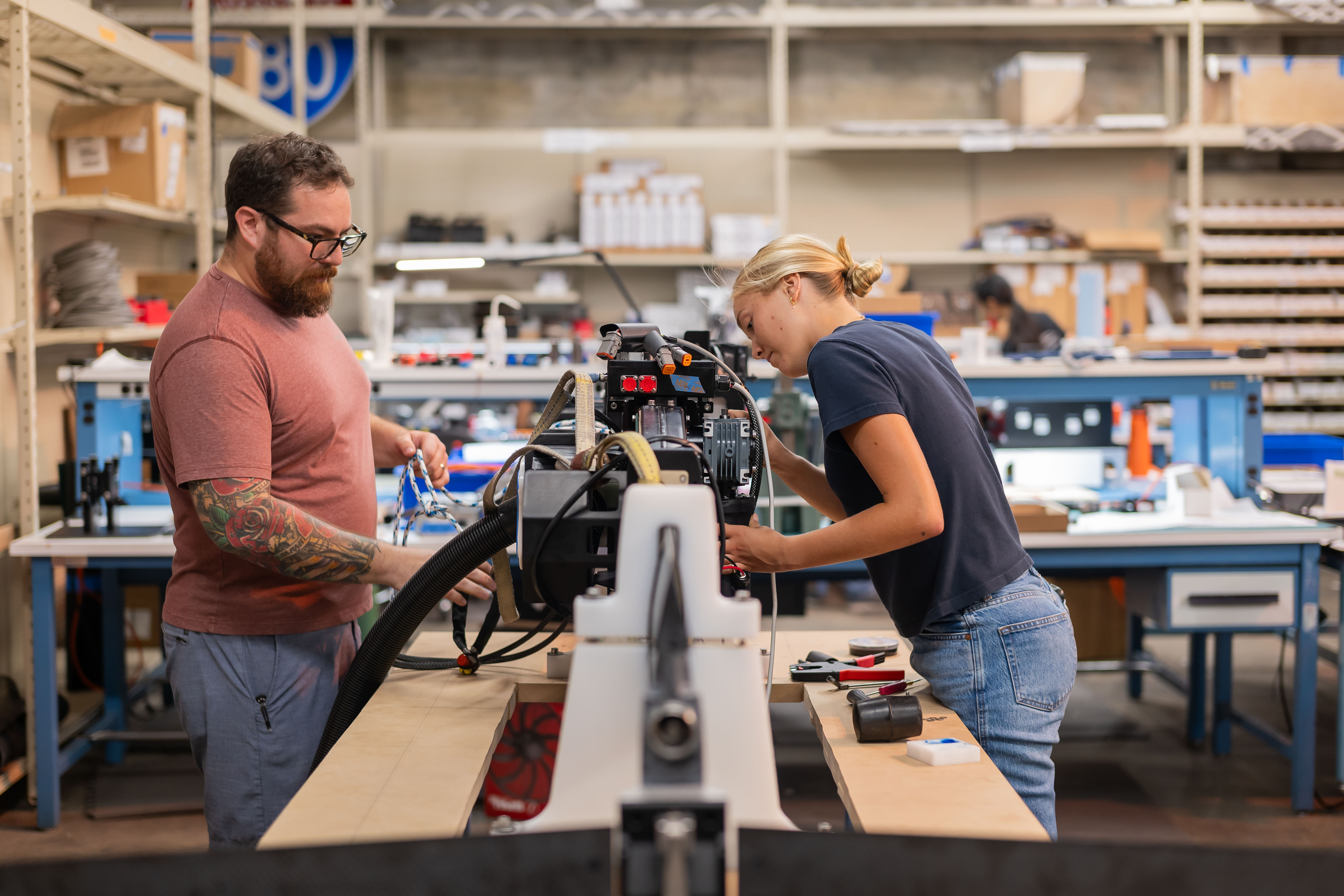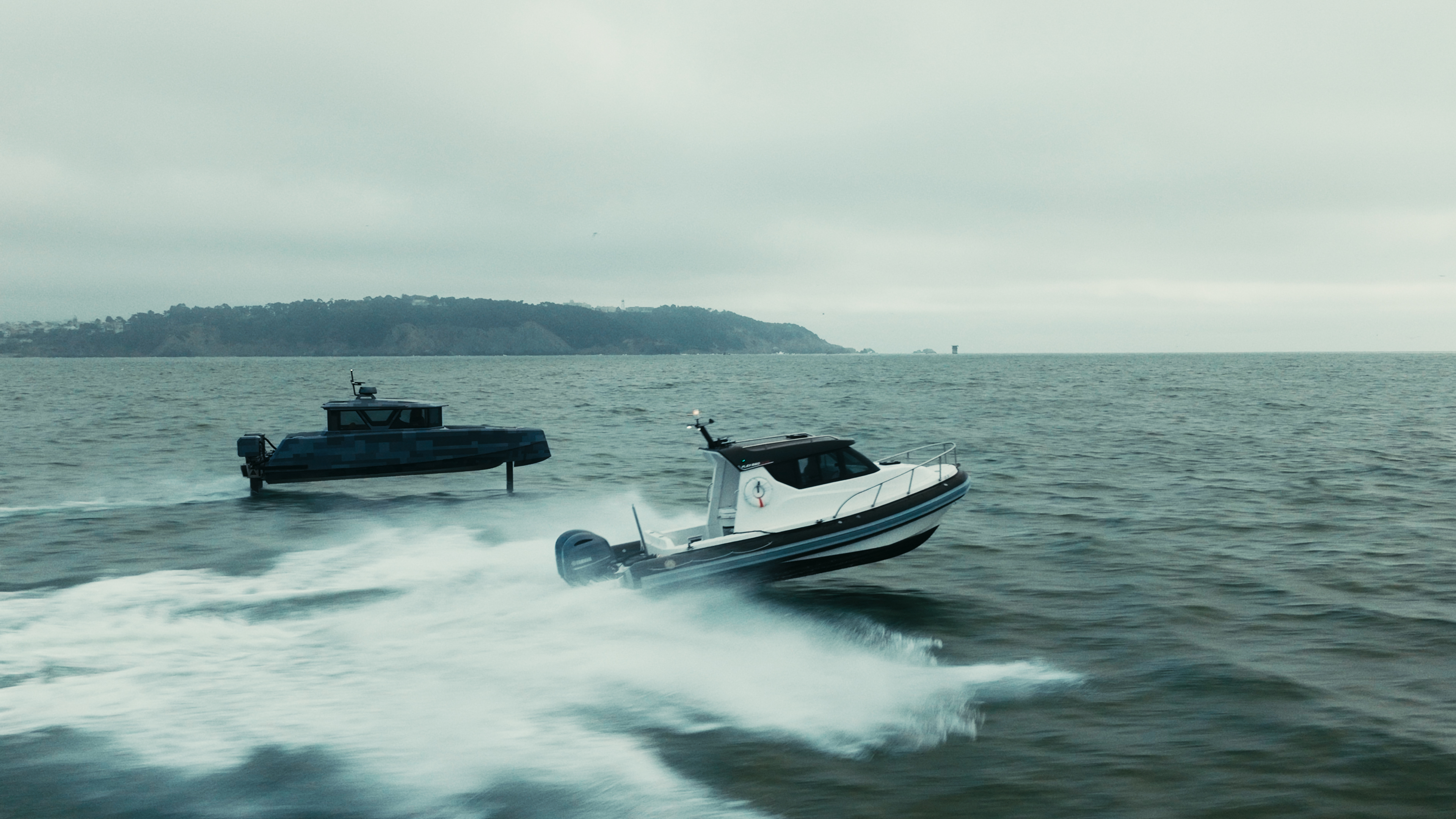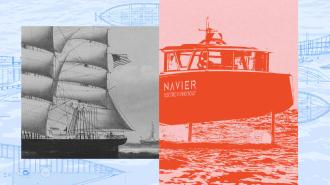I didn’t set out to build boats.
My career began in high-energy physics, searching for the hidden patterns of the universe. I then transitioned to aerospace, working on autonomous aircraft at NASA. At MIT, I turned my attention underwater, developing drones that combined guidance, sensor fusion, and autonomy to probe the hostile interiors of nuclear reactors. Looking back, the through line was learning to understand unseen systems and building machines that could navigate them.
Then, in 2014, Malaysia Airlines Flight 370 vanished. I followed the search closely, and it left me unsettled. In an age when we could locate a smartphone in seconds, how could a modern jetliner simply disappear into the ocean? It was a reminder that the world’s largest geographic frontier remained the least mapped, the least digitized, and perhaps the least understood.
The sea is not merely behind technologically — it is the last great frontier for transformative innovation.
On land and in the air, technology was reshaping everything. Robotics and autonomy were leaving laboratories for factories and highways. Vehicles were becoming electrified and software-defined. We were preparing to return to the moon and planning for Mars, even debating the social risks of automation.
But at sea, the technology stack had scarcely moved since the 1950s. Shipyards and fleets remained analog, fragmented, and slow. And yet the ocean runs the world. Ninety percent of global trade moves across it. Our food and energy lifelines, and even the cables that carry our digital lives, lie beneath its surface. Somehow, we had allowed ourselves to forget this.
That disconnect crystallized my conviction. The sea is not merely behind technologically — it is the last great frontier for transformative innovation. America leads in aerospace, in software, in clean energy. Why not in maritime? To answer that, we must look back: How did we fall from leadership in the first place?
From superpower to bystander
America was built from the water.
Our origin story begins with ships — wooden hulls carrying settlers across the Atlantic to Jamestown in 1607 and Plymouth in 1620. As the country grew, it was rivers, ports, and coasts — not roads — that moved people, coal, grain, and commerce. The Mississippi carried the backbone of agriculture. Cities like New York, Boston, and San Francisco flourished because of their harbors.
During World War II, US shipyards staged an industrial miracle. The Emergency Shipbuilding Program produced 2,710 Liberty ships and 534 Victory ships — over 3,200 oceangoing cargo vessels, some assembled in under two weeks. America’s merchant fleet — its civilian ships for carrying cargo and passengers — became the world’s largest, sustaining Allied logistics. Naval supremacy followed.
Today, America has almost no merchant fleet.
But the post-war pivot was costly. Surplus ships, shifting defense priorities, and declining subsidies gave Japan and South Korea room to modernize their yards. China surged later and now leads global commercial shipbuilding by a wide margin. Of the roughly 5,500 commercial vessels built globally each year, China alone builds around 1,700, while the United States builds fewer than five. China accounts for about 50% of global shipbuilding output by number (and even more by tonnage), with South Korea at around 30% and Japan at about 10–17%. The US market share has dropped to less than 1%.
This collapse was not inevitable — it was the product of policy. US-built ships are three-to-five times more expensive than foreign ones. The Jones Act of 1920 — intended to protect domestic fleets — barred international construction for US operators, but without parallel investments to modernize US shipyards, the law only raised costs. In the 1980s, the Construction Differential Subsidy was abolished, hollowing out the commercial base. Today, America has almost no merchant fleet.
The future is dual use
The current situation is both an economic and national security risk. Most of America’s goods arrive by sea, yet we no longer have the capacity to build the merchant fleets that carry them. Our waterways, once the arteries of commerce, are scarcely used for transport. And while the US Navy operates the most advanced and expensive vessels in the world, we are entering an era of asymmetric warfare, where drones costing thousands can threaten carriers worth billions. In such a world, relying on a handful of exquisite, slow-to-build ships is a vulnerability.
To compete, America must reinvent its maritime strategy with urgency and intent.
The task is not simply to adopt new technologies, but to rethink the architecture of maritime power.
Fortunately, the playbook for industrial revival is changing, and America has the advantage. Software, AI-driven design, robotic manufacturing, and digital twins are redefining how complex systems are built. Where traditional shipbuilding relied on labor and scale, the new frontier rewards autonomy, precision, and adaptability — domains where American ingenuity excels. Drawing on breakthroughs from autonomous cars, drones, spacecraft, and electrification, we now have the tools to rebuild the maritime technology stack from the ground up.
But this opportunity cannot stop at the Navy. America’s waterways themselves hold enormous untapped economic potential. Revitalizing commercial shipbuilding — ferries, merchant vessels, water taxis, and vessels for short-sea shipping — would not only unlock that value in peacetime, but also create the industrial foundation for defense.
This is where dual use becomes essential. Instead of bespoke warships that are costly and slow to deliver, we need common base platforms mass-produced at commercial scale. Civilian operators can use them for trade and transport, while defense primes adapt them with sensors, weapons, and communications for military missions.
This approach lowers costs, accelerates delivery, and — by integrating superior technology on these platforms at scale — ensures that America has both the fleet size and the industrial depth needed to respond to a crisis. The task, therefore, is not simply to adopt new technologies, but to rethink the architecture of maritime power.
New technology drivers
However, scale alone is not enough. To lead at sea, America must out-innovate on three fronts at once. First, in how we build: harnessing automation, robotics, and digital design to bring down costs and accelerate production. Second, in what we build: vessels engineered from first principles of naval architecture to minimize drag, consume less energy, travel farther and faster, and remain stable even in the harshest sea states. And third, in what we integrate: software and autonomy that reduce labor burdens, increase safety, and allow fleets to operate as coordinated, adaptive networks rather than isolated ships.
Maritime superiority in the 21st century will not be measured in tonnage alone. It will depend on whether we can combine these levers — automated production, superior vessel design, and autonomy at scale — to create fleets that are not only affordable and numerous, but also fundamentally better.
Many companies are rightly advancing autonomy. Some companies are heads-down focused on building defense-specific vessels. At Navier, we believed that for America to lead — and to have the greatest economic, geopolitical, and national security impact — we had to build as a dual-use company. That meant going deeper: designing a base platform robust enough to thrive in civilian markets, yet adaptable enough to be quickly repurposed for defense.

The goal of building long-range vessels that could handle high sea states and remain cost-efficient led us to autonomous hydrofoiling vessels. These vessels ride on submerged, winglike structures called foils. As speed increases, the foils lift the hull above the surface, cutting drag by up to 90%. The result is lower energy use, longer range, and a remarkably smooth, stable ride even in rougher seas. When paired with autonomy, the advantages multiply — operating costs fall sharply, especially for smaller vessels where crew expenses make up a significant share of the budget.
Suddenly, ferries and small water taxis become economically viable, costing 10-15 times less than traditional boats of their size.
For commuters, that means cheaper, faster, quieter travel. For defense, it means agile platforms with reach and flexibility that displacement craft cannot match. Fully electric foils keep urban waterways clean and quiet, while hybrid power extends their range to levels suitable for logistics and defense. Integrating autonomy not only reduces labor costs in commercial transport, but also enables unmanned missions — protecting military personnel by keeping them out of harm’s way.
Instead of clinging to a few massive ships, America’s maritime future lies in a greater number of smaller, capable vessels that can scale commercially and then adapt for security needs. A commuter ferry that is efficient and stable and that can, with modest modifications, also carry sensors or systems. A fleet of such craft, operating as a coordinated swarm, could extend a military presence across vast areas for logistics or surveillance.
Unlocking America’s waterways
Vessels like Navier’s — ones that are efficient, stable, adaptable, and capable of being mass-produced as commercial platforms, while forming the foundation of a dual-use strategy — are the key to reopening America’s waterways for people and commerce.
Public transit already offers compelling evidence. In New York City, a high-speed ferry corridor connecting the boroughs could cut a 60-minute commute nearly in half. If just 45,000 commuters shifted modes, that would mean more than $3 billion in annual time savings, while raising waterfront property values by an estimated $10 billion or more. Yet New York’s publicly run ferry system — operated with 38 vessels — recovers only 24% of its operating costs through fares, according to the Citizens Budget Commission. The demand exists, but the economics don’t work.
With faster, cleaner hydrofoiling ferries that dramatically reduce fuel and maintenance costs, that equation changes. What is today a subsidized service could become a scalable mode of transport that shortens commutes, expands access to housing, and relieves pressure on congested subways and bridges.
Smaller, high-speed electric shuttles can transform every marina into a transportation hub.
San Francisco illustrates the same opportunity. Planned ferry expansions, like the Mission Bay Ferry Landing, are projected to save commuters 290,000 hours annually by 2040 and reduce 1.9 million vehicle miles traveled each year by 2050.
Linking hubs such as Oakland, Richmond, Oyster Point, and Redwood City with high-speed foiling ferries would put hundreds of thousands more workers within a 45-minute commute of San Francisco’s job centers, expanding housing supply and cutting emissions from car commutes across the Bay.
But the true unlock goes beyond large ferries. Smaller, high-speed hydrofoiling electric shuttles can transform every marina into a transportation hub, creating a dense mesh of last-mile connections. With 10- to 50-seat hydrofoiling shuttles running every 15 minutes, communities once considered “too far” suddenly join the metropolitan labor market. This means new access to affordable housing, larger labor pools for employers, and less stress on land-based infrastructure.
Because every vessel is built on a dual-use base platform, they are not only commercial assets — they are latent defense capacity.
Freight offers equally striking potential. Barges already move goods more efficiently than trucks: 514 ton-miles per gallon of fuel by water, compared with 155 by truck, according to the Army Corps of Engineers. That translates into costs of about $0.01 per ton-mile by water versus $0.12 by road.
Autonomous hydrofoiling barges — capable of carrying 10 shipping containers at truck-competitive speeds — could cut logistics costs by as much as 40%, saving operators hundreds of millions annually while eliminating over a million metric tons of CO₂. For Hawaii and Puerto Rico, even a 10% reduction in shipping costs would meaningfully lower consumer prices on essential goods.
The economic impact extends to industry as well. Based on shipbuilding multipliers [the US Department of Transportation, Maritime Administration (MARAD), estimates 2.6 supplier jobs per shipyard job] and current industry scale, we estimate that launching three modern, robotic shipyards (one each on the Atlantic, Pacific, and Gulf coasts) would require on the order of $1–1.5 billion in upfront investment. If these facilities each employ ~2,500 direct skilled workers (7,500 in total), they could support ~19,000–20,000 additional supply-chain jobs, yielding ~27,000 total jobs. With consistent civilian and defense demand driving dual-use production, such yards could plausibly reach break-even in 5–7 years. This scale would help reestablish America’s leadership in advanced shipbuilding — backed by credible multipliers and industry benchmarks
Reopening waterways with efficient, scalable fleets is, therefore, a national unlock: faster commutes, stronger housing markets, lower logistics costs, cleaner air, and cheaper goods. And again, because every vessel is built on a dual-use base platform, these fleets are not only commercial assets — they are latent defense capacity, ready to be adapted if and when the nation requires it.

Scale, speed, and urgency
The path back to maritime leadership is clear, but it demands urgency. We must build vessels affordably at scale, harness autonomy to cut costs, and design ships with the range, endurance, and sea-state performance to outlast competitors. Scale and speed are not just economic advantages — they are strategic.
That conviction drives my work at Navier: showing that the technologies transforming land and air can be applied at sea, unlocking new possibilities for both commerce and defense. What began as a company is part of something larger — a reminder that America can once again lead if it chooses to invest in the fundamentals.
We fell behind not for lack of ingenuity, but because we neglected the levers of scale: common platforms, dual-use demand, and modern production systems. Yet America leads in the very domains that matter most for the next era of shipbuilding: software, robotics, and advanced manufacturing. The technologies are ready, the need is urgent, and the payoffs are immense. The ocean is not simply our past — it is our future. The question is whether we will seize it now, or watch from the sidelines as others define it for us.
We’d love to hear from you! If you have a comment about this article or if you have a tip for a future Freethink story, please email us at [email protected].






